Heading West - Stage Three
I’m woken around 9:30 by the fellow in the next cabin - he needs to get to a dramatic sounding dentistry appointment in Greymouth and his car won’t start. He has jump leads but I can’t get my car in close enough - so we have to wake the guy in the other cabin: he won’t be amused because he’s worked security all night. Interesting to see him come out in a black and white onesie - he’s older than me!
It’s raining, and stays that way all day, which isn’t the best. I start with a coffee in town, then go explore the Westland Industrial Heritage Park - there’s no-one in the office so I hope I wasn’t expected to pay. It’s a really good museum, in five sheds distributed around one end of the aerodrome - I do get a bit wet running from shed to shed, but it’s worth it.
The first shed has a collection of big engines. Quite a few spent most of their life powering sawmills, with one of them doing extra service powering a generator in Haast when the township lost power. The green one is the exception - it was used in a ship which fished around the Chathams. It was hit by a storm in 1994, lost power and drifted most of the way back to New Zealand. It was put back into service and abandoned in 2014 near Westport - the ship was cut up for scrap but its engine made its way here. All engines are operational - I’d imagine it could get quite noisy on a crank up day.




The next shed has quite a mixed collection - lots of sewing machines, set up to look like they might still be used for some purpose - along with a lot of random stuff and a replica airplane. New Zealand’s first air service (Air Travel (NZ) Ltd) was set up here in Hokitika - they had to carry the plane in and assemble it. Conditions here are pretty rugged: in the 1940’s, they crashed three planes, with six fatalities, including Bert Mercer, the owner. This plane is a replica De Havilland DH83 Fox Moth, the first plane in the Air Travel fleet. Three months after it started life, it hit a bull taking off in Fox Glacier, causing substantial damage to the plane (the bull’s state of health is not mentioned). It spent a couple of years in military service and then became part of the National Airways Corporation (a forerunner of Air New Zealand).

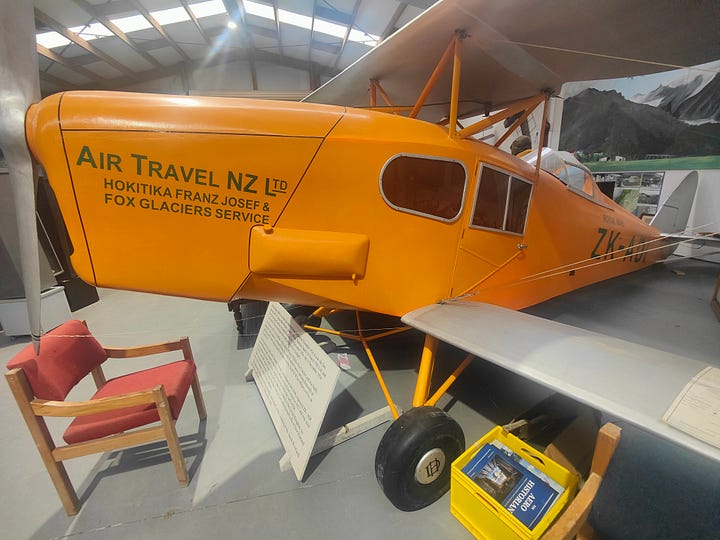
The thing I liked about the small collection of coaches is that they are real coaches used in the area, with an account of how they were used - I feel a bit of a connection to history in the time I spend with them. Hall’s coaches went over Arhtur’s Pass with passengers and mail - this one was the last one to make the run, before the service was made redundant by the opening of the Otira Tunnel in 1923. Three years earlier, Mr Hall had conveyed Edward, the Prince of Wales (later, the brief King Edward VIII) and his retinue in 14 coaches - the green one was part of that voyage, but only carried his luggage, not the Royal person.
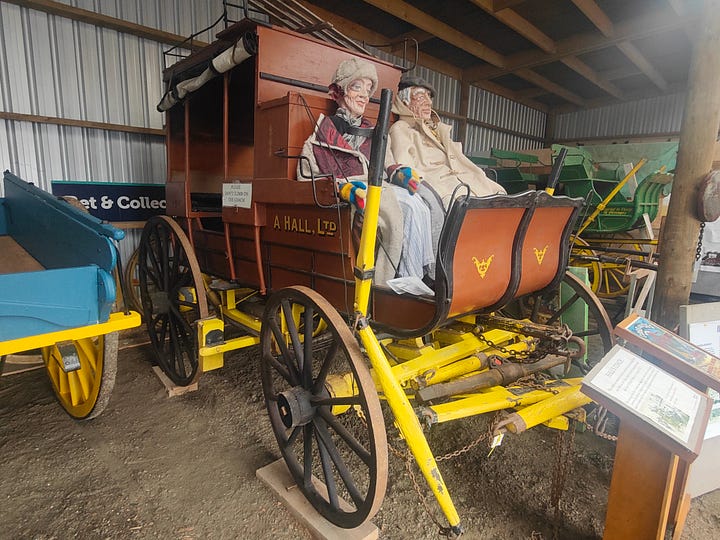

Naturally, there’s a fair amount of machinery, although very few cars. Nice to see another David Brown P25, and the biggest Nuffield I’ve ever seen (they were made in the Morris Motors premises in Birmingham - as part of the entity which was ultimately known as British Leyland).



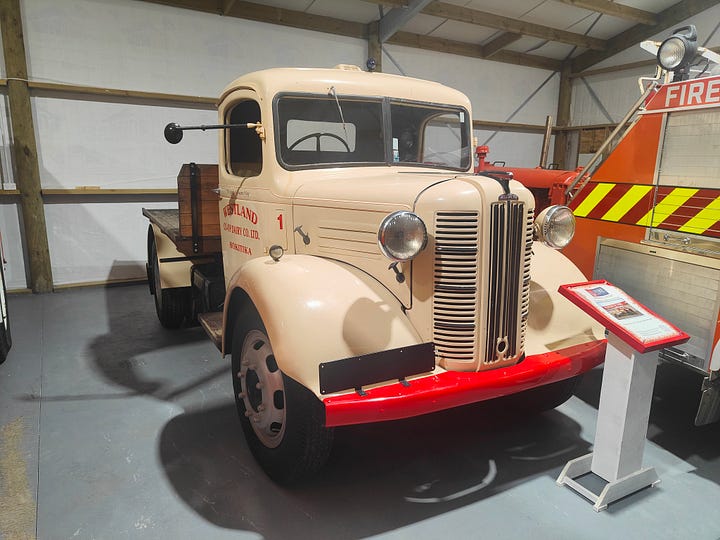
The Park has a big collection of fire engines - one big shed is devoted to them, and there’s an overflow into the next.
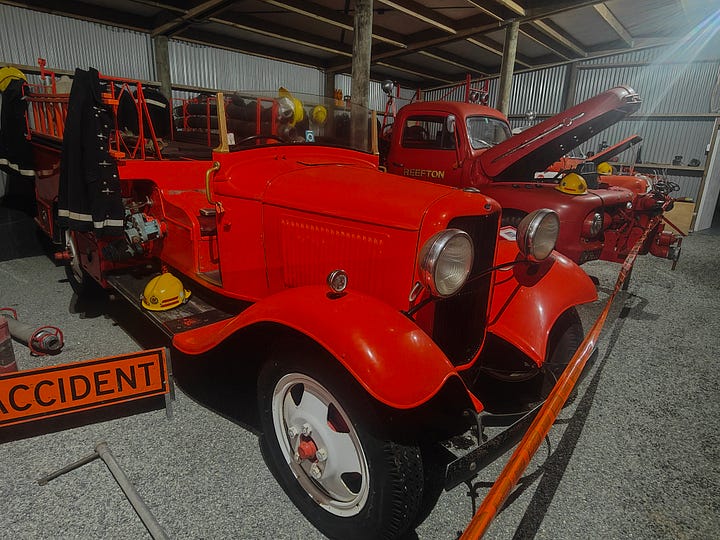



I don’t know if this is to represent the fire service or the railway service. It carries passengers - they sit in the back, with a space in the front for a driver, sitting almost directly above what looks like a lawnmower engine - looking through the windscreen you can see above the central white light.
Something I learn about Hokitika from my time in the park: in 1867, Hokitika Port had the greatest number of vessels coming from overseas, and the greatest value of goods exported through it - mainly because it was the peak of the gold rush. This is the precise period in which Eleanor Catton’s book The Luminaries is set.
I have a plan for lunch which doesn’t work out, because my destination is closed, so I spend my afternoon having lunch then using the great local library, before heading back to the cabin to finish reading Steve Braunias’ book Polkinghorne: Inside the Trial of the Century. I try the Woodstock Tavern again in the evening - it’s about ten minutes out of town, and one of two craft breweries on the West Coast (the other is Shortjaw in Westport). It’s fairly quiet, but the beer is so good I have a couple - they serve me the second and then only minutes later tell me they’ll be locking up in 15 minutes. By the time I get outside, they’ve turned all the lights off.
In the morning, I have a bit of a dilemma - do I go all the way home, or stop somewhere? It’s at least 550 km, the shortest way. I have a coffee and get some photos of the beach, and decide I’ll see how I go.

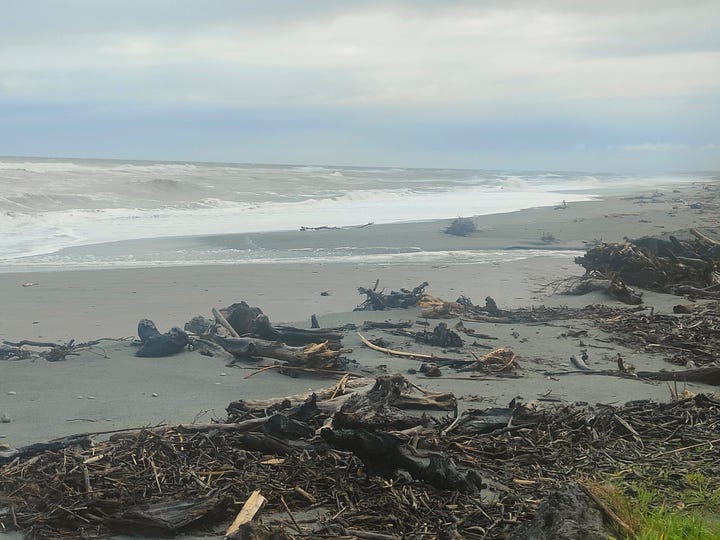
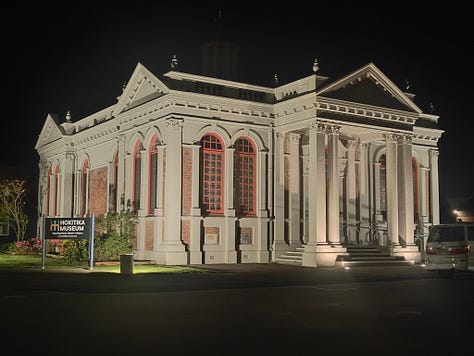

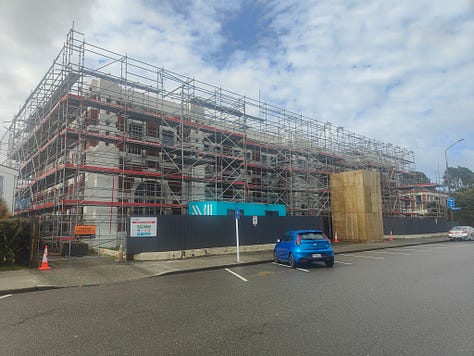
I’m pleased to see work being done on the Seddon Building (the one on the right) - it’s the former Council building and probably my favourite on the West Coast. I ask the librarian hopefully if someone plans to use it - no, they’re just doing strengthening work to make sure it doesn’t collapse. The other two buildings, by the way, are Hokitika’s Museum (in the former Carnegie library) and it’s iconic clocktower roundabout.
Cheers!



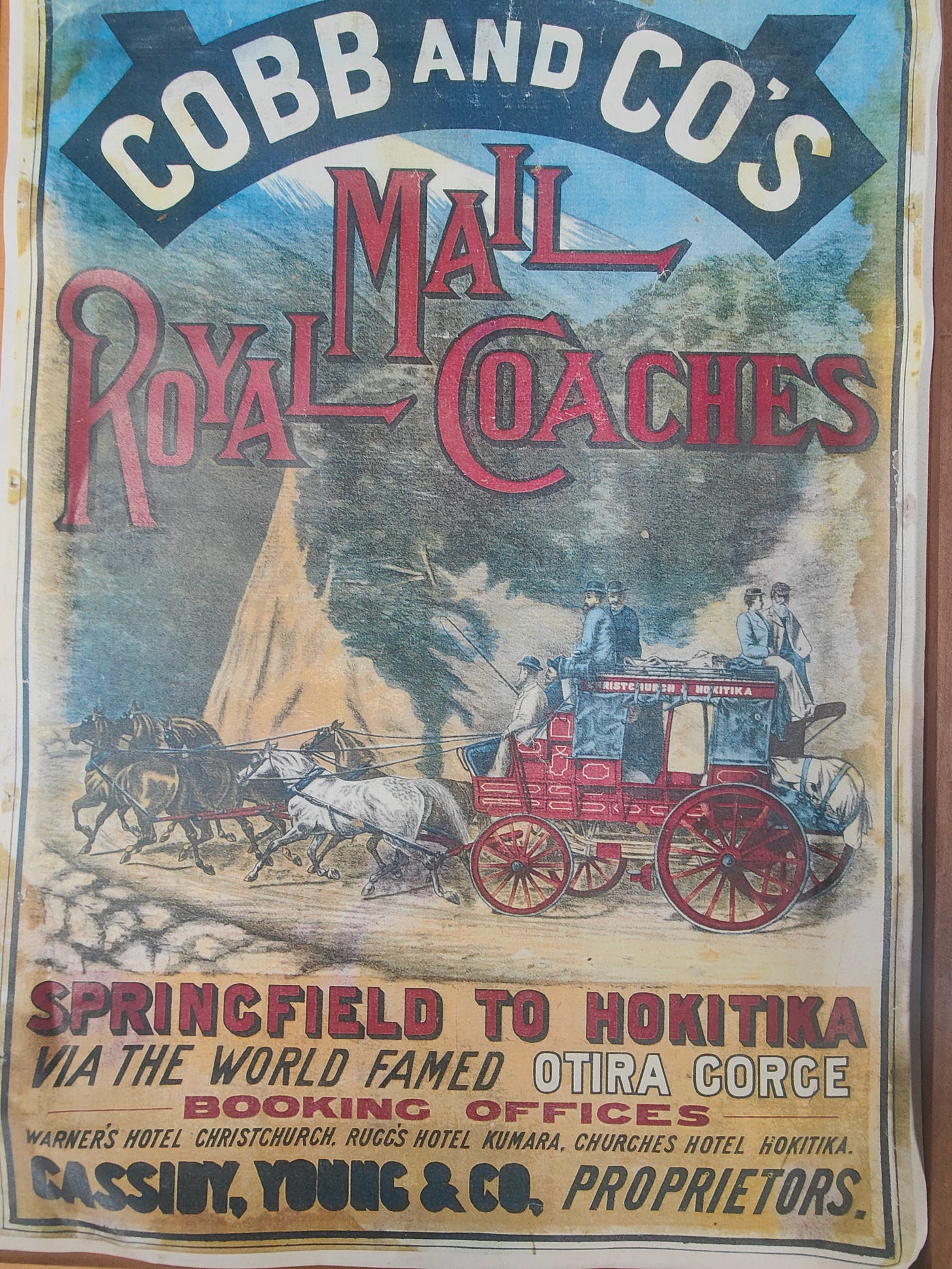


Wonderful - I'm always adding to my Maps when I read these - Westland Industrial Heritage Park on the list of must-sees, now!
We got a beer at the Woodstock Tavern on our way back from doing the Hokitika Gorge walk. We'd gone to their tavern in Greymouth but they didn't have any of their beer on tap there! The Hokitika Museum had an amazing exhibition of pounamu on when we were there in February. It's a lovely building.